The Rain Ants of Sarayaku
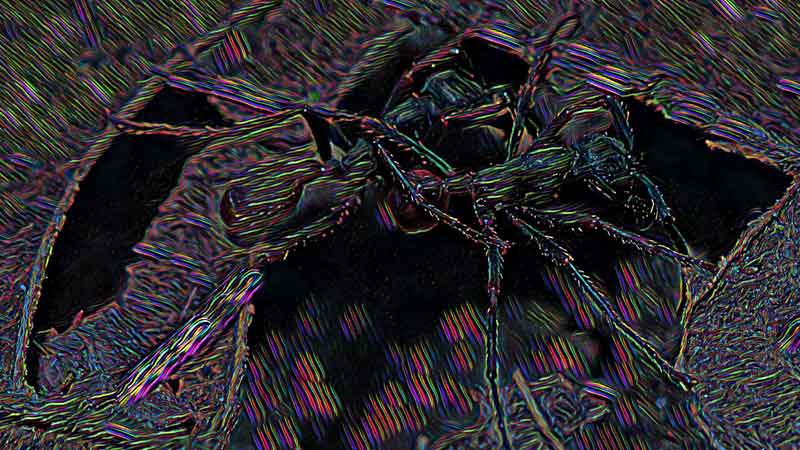
A basic living passage: two tamya añanku cover a hole to ease the traffic flow of other ants. Created using machine-learning algorithms based on convolutional neural networks (Anish Athalye’s Neural Style), transferring an image of laser beams projected onto the forest soil to style the original photo. This process enhances intricacies of the substrate and the hairy receptors on the ants’ bodies.

A second living passage is woven by two smaller tamya añanku to patch the void on a leaf. The original photograph was convoluted 200 times using the same method above, this time passing to the algorithm an image of the night sky in Sarayaku.
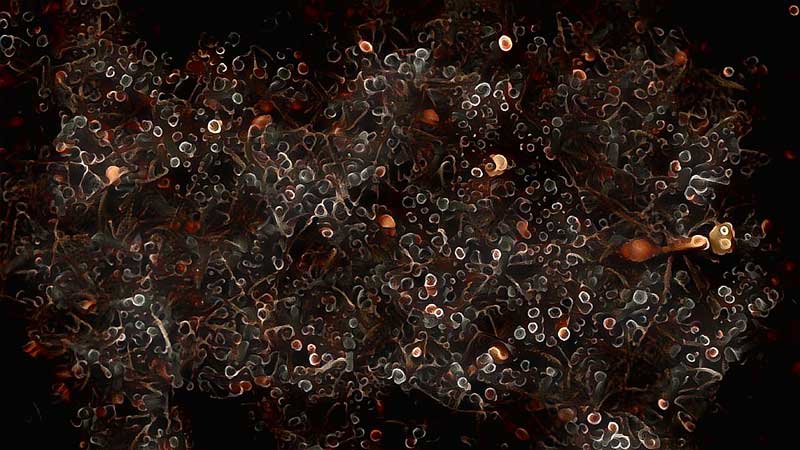
Convoluted photograph of a fabric woven by rain ants, processed with convolutional neural networks (Anish Athalye’s Neural Style) using an image of yeast parasites of leaf-cutter ants.

Convoluted photograph of a rain ants’ nest inside a tree, same algorithm as previous images, using a close-up detail of the ashanga basket as a style transfer.

Inverted corporeal performance of the rain ants’ nest, concealed inside a fallen tree, prior to forming a hunting trail on the ground. This image is part of a video sequence, processed with convolutional algorithms for detecting and tracing ant movements (TRex). I intentionally turned it sideways to point to the sequence of photographs below, which show this corporeal performance in progress.

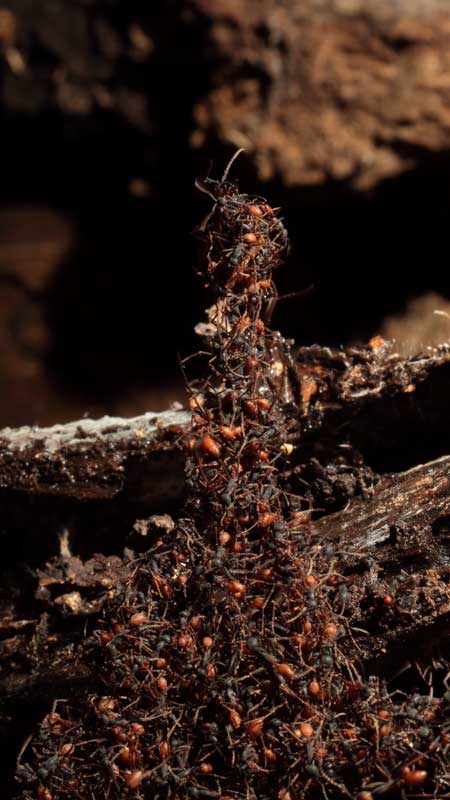
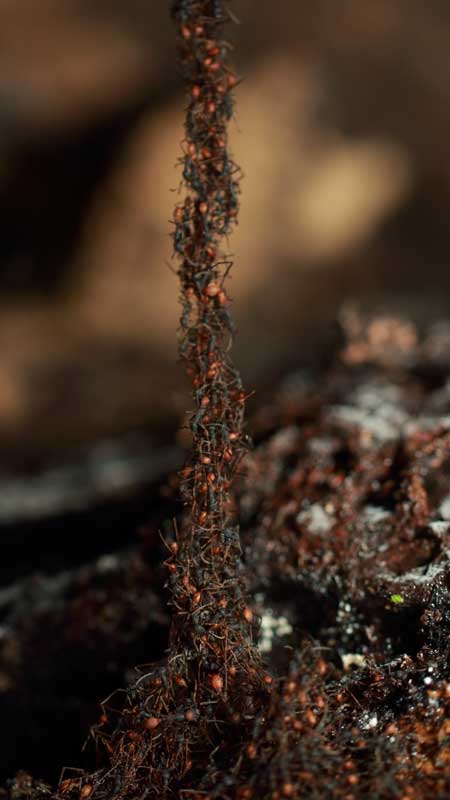

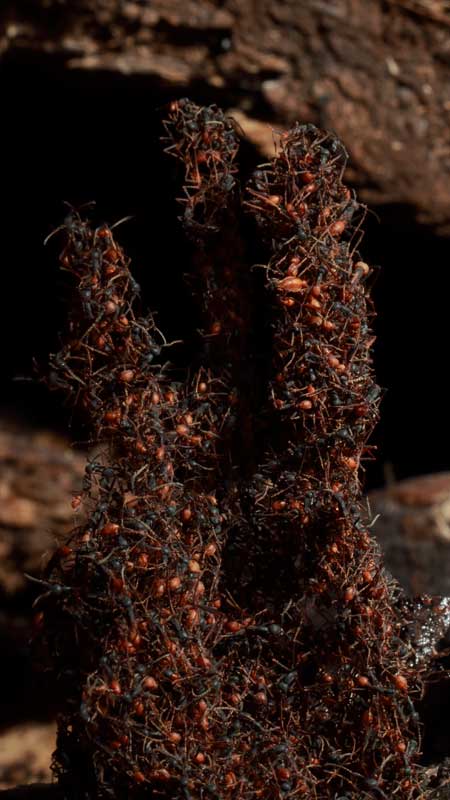
A sequence of corporeal forms protruding out from a rain shelter. I have placed them explicitly upside down to incite a change in perspective (TIAM). In reality, these ephemeral woven corporealities extend downwards.
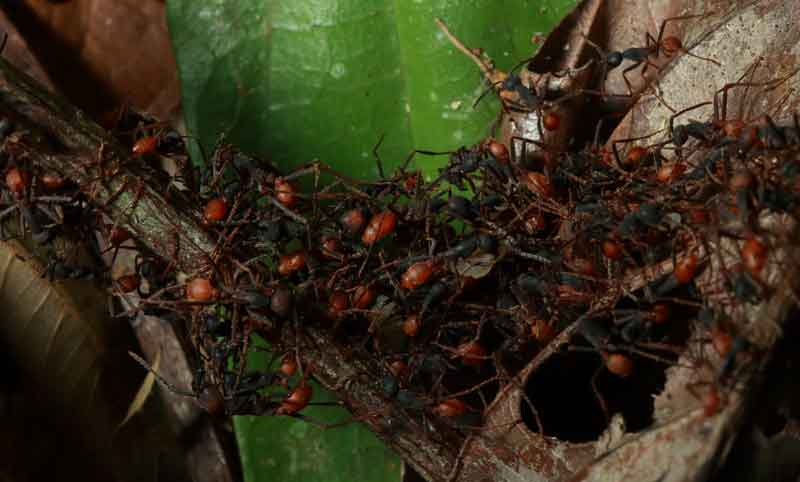
A bridge made of ant bodies to ease transit flow has been improvised on the soil litter at the gap between branches and leaves. This living passage was woven during the hunting of a paper wasp nest.

A fabric of rain ants envelops a paper wasp nest, approximately at 2 meters above ground.

A rain ant manipulates a photocell next to a corporeal passage during my registry of laser interferences. This image shows the difficulties of my interventions, as sometimes electronic components were bitten, moved, and cut apart by the ants.

Interfering and syncopating rain shelters with piezoelectric sensors. This image captures a moment in which I was attempting to record sounds from the woven nest.
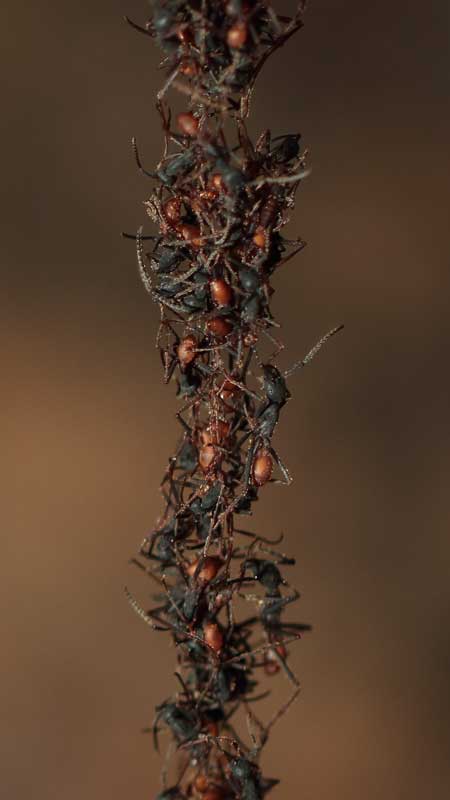
Rain ants weave passages with their bodies by tightly clinching to each other’s feet. This one is rather a ladder extending from a rain shelter, a tendril extending from the living nest.

This thick fabric of rain ants is a small patch of a woven shelter, which was performed at night.

Apatinka, big-head elder, as known by Sarayaku people, is guarding the entrance to the nest. This is the keystone individual of rain ants which in Anglo-American science is known as a soldier or major.

A living carpet, woven in transition by thousands of invertebrate bodies, appears to resemble water drops when paying attention to the the pale colored heads of the Apatinka. The smell of skatole (the signature scent of rain ants which humans can perceive) is particularly intense when encountering them in this form.
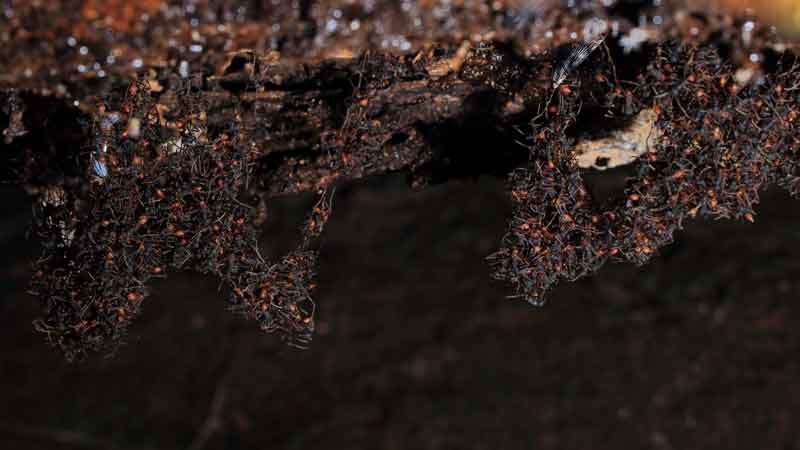
An inverted view: a momentary fabric in motion of a woven nest. This fabric is viscous and fluid. The forms rain ants create with their bodies lie beyond scientific validations and defy gravity and geometrical classifications. Their rhythmic lifeforces entwine with the agencies of rain. The turbulent flows, radical turns, tensile relations, tactile intimacies, chemical metabolisms, and oscillations they perform attune to the topologies and cultural situations of Sarayaku’s territoriality from underneath.